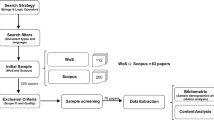Abstract
To clarify the relationship between software development productivity and the attributes of a software project, such as business area, programming language and team size, this paper analyzed 211 enterprise application development projects in Japan using a software engineering data repository established by the Software Engineering Center (SEC), Information-Technology Promotion Agency, Japan. In the analysis, we first identified factors that related to productivity based on a parallel coordinate plot (PCP) and a one-way ANOVA. An in-depth analysis on each productivity factor was then conducted by selecting a project subset for each factor so that the effect of other factors is minimized. Our findings include that the average team size was the strongest attribute relating to productivity. The outsourcing ratio (percentage), which can be controlled by software development companies, and the business sector both showed a moderate relationship to productivity. Finally, product size (FP), the duration of development and the programming language were only weakly related to productivity.




















Similar content being viewed by others
Notes
These PCPs were made using DAVIS [8].
References
C. Andersson, A replicated empirical study of a selection method for software re-liability growth models. Empir. Softw. Eng. 12(2), 161–182 (2007). doi:10.1007/s10664-006-9018-0
C. Andersson, P. Runeson, A replicated quantitative analysis of fault distributions in complex software systems. IEEE Trans. Softw. Eng. 33(5), 273–286 (2007). doi:10.1109/TSE.2007.1005
J. Blackburn, G. Scudder, L. Wassenhove, Improving speed and productivity of software development: a global survey of software developers. IEEE Trans. Softw. Eng. 22(12), 875–885 (1996). doi:10.1109/32.553636
W. Conover, Practical Nonparametric Statistics, 3rd edn. (John Wiley & Sons, New York, 1998)
S. Conte, H. Dunsmore, V. Shen, Software Engineering Metrics and Models (The Benjamin/Cummings Publishing Company, Inc, Menlo Park, California, 1986)
M. Cusumano, A. MacCormack, C. Kemerer, B. Crandall, Software development worldwide: the state of the practice. IEEE Softw. 20(6), 28–34 (2003). doi:10.1109/MS.2003.1241363
L. Duvall, A study of software management: the state of practice in the United States and Japan. J. Syst. Softw. 31(2), 109–124 (1995). doi:10.1016/0164-1212(94)00091-Z
M.Y. Huh, K. Song, DAVIS: a java-based data visualization system. Comput. Stat. 17(3), 411–423 (2002)
A. Inselberg, The plane with parallel coordinates. Vis. Comput. 1(4), 69–91 (1985). doi:10.1007/BF01898350
C. Jones, Software Assessments, Benchmarks and Best Practices (Addison Wesley, Reading, MA, 2000)
K. Maxwell, P. Forselius, Benchmarking software development productivity. IEEE Softw. 17(1), 80–88 (2000). doi:10.1109/52.820015
K. Maxwell, L. Wassenhove, S. Dutta, Software development productivity of European space, military, and industrial applications. IEEE Trans. Softw. Eng. 22(10), 706–718 (1996)
E. Mendes, C. Locan, Replicating studies on cross- vs single-company effort models using the ISBSG database. Empir. Softw. Eng. 13(1), 3–37 (2008). doi:10.1007/s10664-007-9045-5
P. Pendharkar, J. Rodger, An empirical study of the impact of team size on software development effort. Inf. Technol. Manage. 8(3), (2007)
R. Premraj, M. Shepperd, B. Kitchenham, P. Forselius, An empirical analysis of software productivity over time. in Proceedings of 11th IEEE International Software Metrics Symposium (METRICS’05), Como, Italy, September (2005), p. 37
Software Engineering Center, Information-Technology Promotion Agency, Japan, The 2005 White Paper on Software Development Projects (in Japanese) (Nikkei Business Publications, Tokyo, Japan, 2005)
Software Engineering Center, http://www.ipa.go.jp/english/sec/
M. Tsunoda, A. Monden, H. Yadohisa, N. Kikuchi, K. Matsumoto, Productivity analysis of Japanese enterprise software development projects. in Proceedings of 4th International Workshop on Mining Software Repositories (MSR 2006), Shanghai, China, May 2006, pp. 14–17
B. Winer, D. Brown, K. Michels, Statistical Principles in Experimental Design, 3rd edn. (McGraw-Hill, New York, 1991)
Acknowledgments
The authors would like to thank the Software Engineering Center, Information-Technology Promotion Agency, Japan, for offering the SEC dataset. This study was supported by the EASE (Empirical Approach to Software Engineering) project of the Comprehensive Development of e-Society Foundation Software program of the Ministry of Education, Culture, Sports, Science and Technology of Japan. This work is being conducted as a part of StagE Project, the Development of Next Generation IT Infrastructure, supported by Ministry of Education, Culture, Sports, Science and Technology.
Author information
Authors and Affiliations
Corresponding author
Rights and permissions
About this article
Cite this article
Tsunoda, M., Monden, A., Yadohisa, H. et al. Software development productivity of Japanese enterprise applications. Inf Technol Manag 10, 193–205 (2009). https://doi.org/10.1007/s10799-009-0050-9
Received:
Accepted:
Published:
Issue Date:
DOI: https://doi.org/10.1007/s10799-009-0050-9




